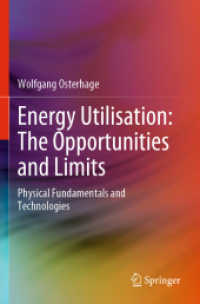- ホーム
- > 洋書
- > 英文書
- > Science / Mathematics
Full Description
This book illustrates the first connection between the map user community and the developers of digital map processing technologies by providing several applications, challenges, and best practices in working with historical maps.








